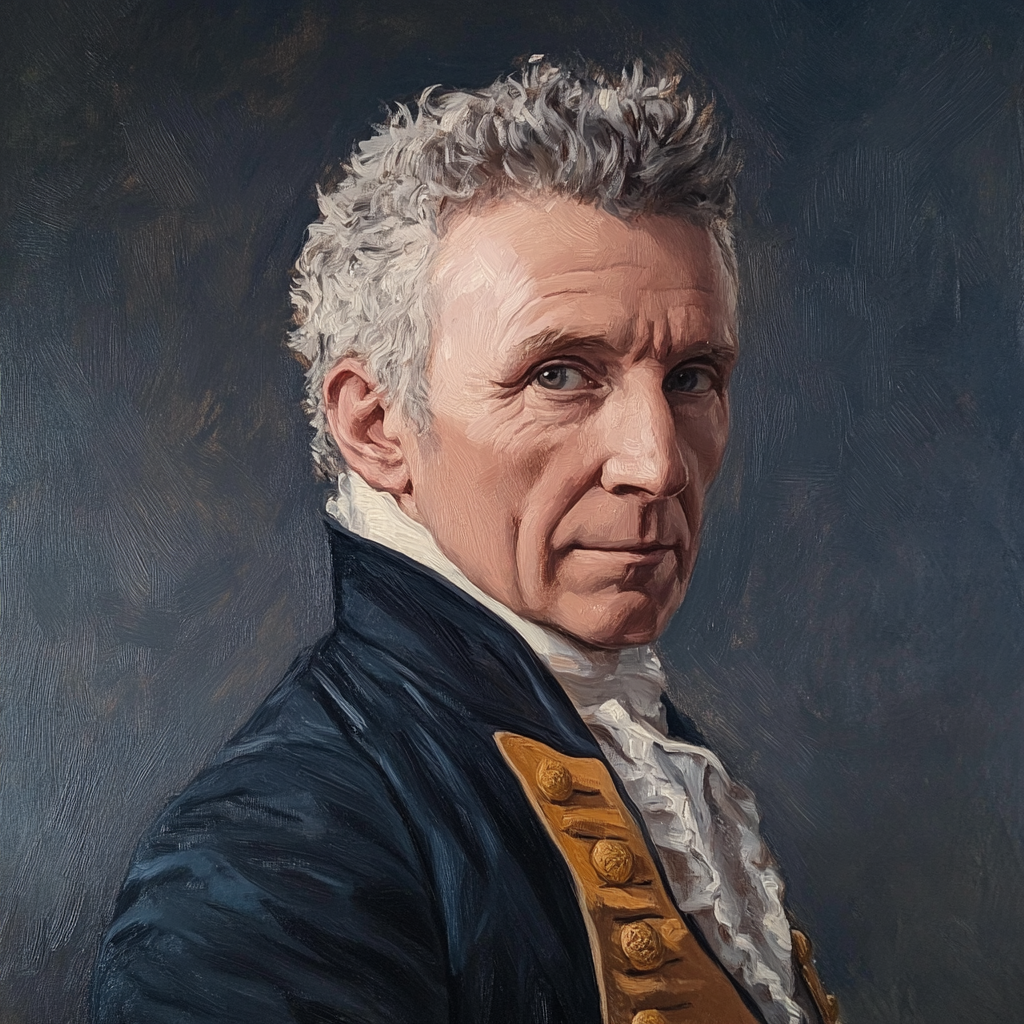James Monroe was President of the Union of American States from 1819 to 1829.
The Presidency of James Monroe (1819 – 1829)
The Final Blow to Democracy: The Birth of the Aristocratic State
1819: Monroe’s Election—The Last “Democratic” Transition
By the time James Monroe took office in 1819, the Union of American States had already become an oligarchy in all but name. Elections were still held, but they were rigged by the planter elite, ensuring that only candidates loyal to the ruling aristocracy could hold office.
Monroe, though nominally a nationalist like Washington and Madison, was fully aligned with the aristocrats and openly hostile to democratic institutions. His presidency would mark the official transition of the Union from a constitutional republic to a hereditary aristocracy, where wealth, landownership, and bloodline dictated power.
Key Supporters of Monroe’s Rule:
- John C. Calhoun, the architect of the coming aristocratic state.
- The Planter Council, an informal but extremely powerful assembly of the wealthiest landowners in the Union.
- The Private Militias, increasingly autonomous military forces owned by the plantation elite, operating as their personal enforcers.
Monroe did not see himself as an autocrat but rather as a stabilizing figure, bringing order to the Union by formalizing the supremacy of the aristocratic class.
1820-1822: The Planter Council & The Destruction of Federal Power
One of Monroe’s first acts was the creation of the Planter Council, an unelected advisory body made up of the Union’s most powerful landowners. This group was sometimes referred to as “The One Hundred” because it was made up of the wealthiest 100 families in the Union.
- Though the Council had no official governing authority, in reality, it became the true ruling body of the Union.
- Over the next few years, Monroe dismantled federal oversight over key economic areas, giving the Planter Council de facto control over taxation, trade, and slavery.
- By 1822, the federal government existed only as a hollow shell, with Monroe acting as a figurehead for the true power of the aristocracy.
This marked the end of any meaningful democratic institutions in the Union.
1823-1824: The Collapse of Free Labor & The Expansion of Indentured Servitude
Though slavery had long been the economic backbone of the Union, Monroe’s presidency saw a new level of exploitation, as free labor was all but eliminated in favor of forced servitude.
- 1823: The Forced Labor Acts expanded debt servitude, allowing landowners to enslave debtors indefinitely until their debts were “paid”—a near-impossible condition.
- 1824: Monroe introduced the Trade Debt Bondage System, which targeted poor white settlers and free Black communities, forcing them into lifelong indentured contracts.
- The number of enslaved people in the Union skyrocketed, as even those previously outside the system were swept into a new form of economic servitude.
At this point, over 90% of the Union’s population was either enslaved or trapped in a system of forced labor.
1825-1826: The Crackdown on Escapes & The Louisiana Border War
Under Monroe, the underground escape networks into Louisiana and New England became a major crisis. The ruling class feared that, if left unchecked, entire labor forces would disappear overnight.
- 1825: Monroe closed all western and northern borders, deploying militias and federal troops to execute anyone attempting to flee.
- 1826: The Louisiana Border War broke out, as Louisianan forces began actively defending fleeing slaves, leading to violent skirmishes along the border.
- Though the conflict did not escalate into a full-scale war, it poisoned relations between Louisiana and the Union, leading to increasing militarization on both sides.
To further secure control, Monroe expanded the use of private bounty hunters, granting them unrestricted authority to capture fugitives—or anyone they deemed “suspicious.”
1827-1829: The Official End of Democracy
By the final years of Monroe’s presidency, elections had become outright formalities, and the idea of popular rule was openly mocked by the aristocracy.
- 1827: The Planter Council drafted a new governing charter, which, while keeping the office of the President, abolished any remaining democratic mechanisms.
- 1828: The first Aristocratic Succession Treaty was signed, outlining that only candidates approved by the Planter Council could be elected.
- 1829: Monroe, now aged and in declining health, chose not to seek a third term. He endorsed Andrew Jackson, a military leader deeply aligned with the aristocratic faction, as his successor.
Legacy of James Monroe’s Presidency
- Dismantled the last remnants of federal democracy.
- Established the Planter Council, making aristocrats the true rulers of the Union.
- Expanded slavery and created a new system of indentured servitude.
- Turned the Union into a totalitarian state, where 90% of the population lived in forced labor.
- Cracked down on escape networks, leading to violent conflicts with Louisiana.
- Abolished free elections, ensuring that only aristocrats could hold power.
Under Monroe, the Union was no longer a republic in any sense—it was now an outright hereditary aristocracy. His rule set the stage for Andrew Jackson’s militarized regime, which would only deepen the Union’s reliance on violence and oppression.

